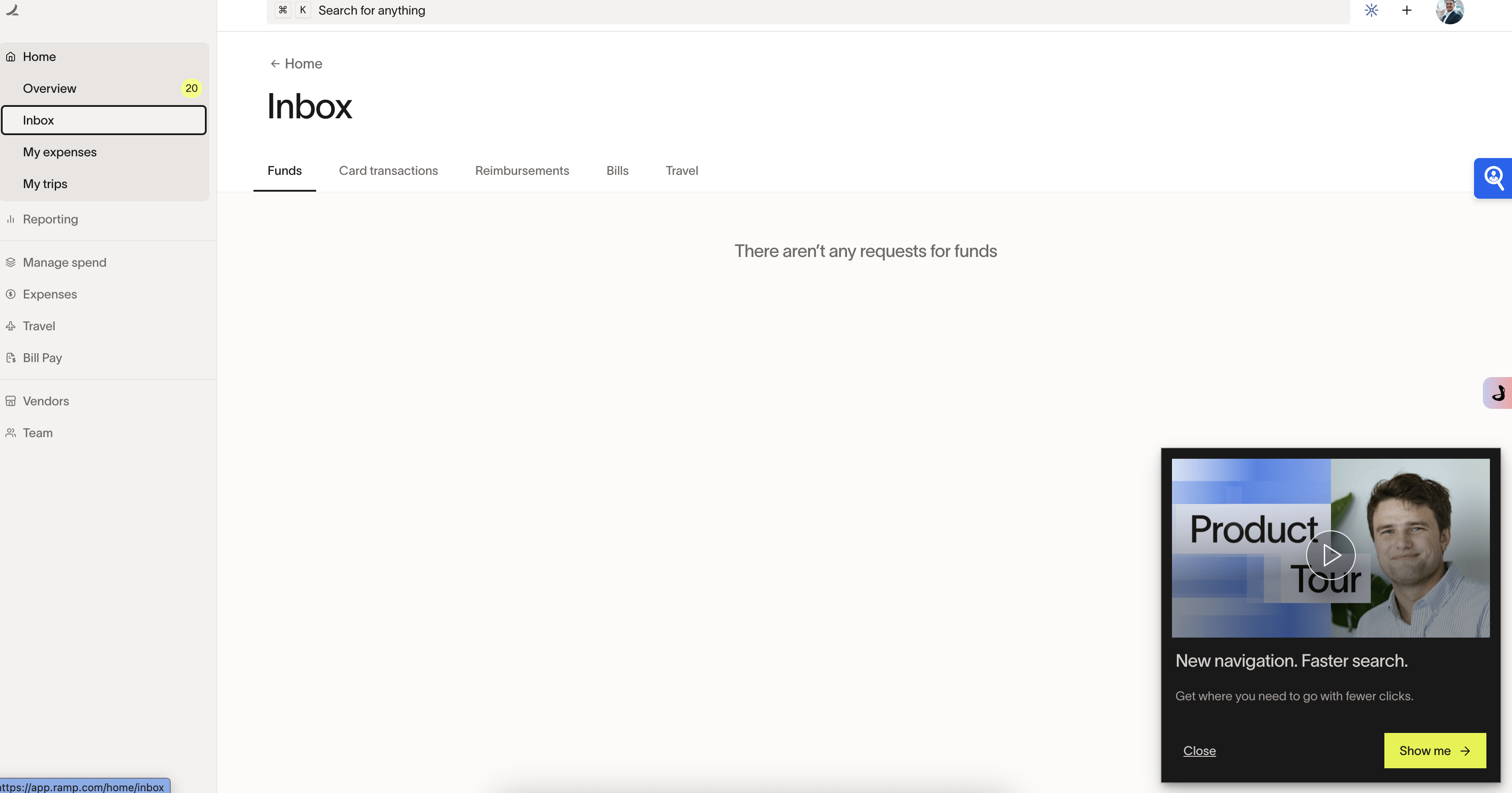
When it comes to B2B fintech platforms, Ramp.com is leading the charge — not just in spend management innovation, but in how it enables users inside the product. One under-the-radar tactic Ramp uses masterfully? In-product popups.
If you've logged into Ramp recently, you've probably seen it: a subtle, well-timed popup highlighting a new capability, like “Reimbursements” or “AI-powered Receipt Matching.” But this isn't just marketing fluff. It's a targeted strategy designed to educate users at the exact moment of relevance, accelerating adoption and ultimately increasing product stickiness.
Ramp doesn’t spam users with updates. Instead, popups are triggered based on where you are in the platform and what features you’re actively using. If you're managing employee expenses, you might see a small banner or modal introducing real-time policy suggestions. This just-in-time education ensures the message is helpful, not disruptive.
Popups are minimalistic and to the point. They're not lengthy tooltips — they’re a few sentences with a single CTA: “Try it now,” “Learn more,” or “Watch quick video.” That simplicity respects the user’s time and lowers the friction to try something new.
Rather than relying solely on email updates or customer success teams, Ramp leans into self-serve. These popups act as mini-guides, helping users discover features organically. Over time, this leads to higher adoption rates without the overhead of live training or support tickets.
Many of Ramp’s in-app popups also include quick thumbs-up/down reactions or short surveys. This lets the product team rapidly test messaging, iterate on feature rollouts, and better understand which updates resonate with users.
Ramp’s popup strategy reflects a broader trend: B2B software is finally learning from consumer UX. Just like Netflix uses in-app nudges to promote a new series, SaaS tools like Ramp are using popups to promote new features and improve onboarding — right inside the product.
The result?
For companies looking to improve their own onboarding or release communication, tools like Upvert.io now make it possible to deploy these kinds of popups in minutes, with AI support to write the copy, design the layout, and track engagement.
Ramp.com’s use of in-product popups is a quiet masterclass in user enablement. By meeting users where they are — inside the product — they’ve turned new feature releases into moments of delight instead of disruption.
If you’re building a B2B SaaS tool and still relying on emails to announce product updates, it might be time to pop into the future.
Create no code popups and start increasing your B2B conversions by 15-22% on your website and turn your product in a high performing revenue channel